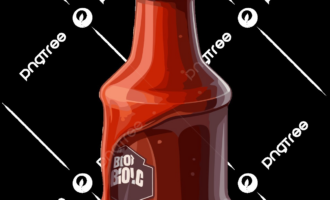MASTERING THE ART OF REPAIR: HOW TO FIX A BROKEN CHEESE SAUCE
Cheese sauce is a beloved addition to many dishes, from macaroni and cheese to nachos and beyond. However, even the best cooks can encounter the dreaded “broken” cheese sauce—a sauce that has separated, become grainy, or just doesn’t have the creamy texture you were aiming for. Fear not! In this article, we’ll explore the common causes of a broken cheese sauce and provide effective solutions to restore its luscious consistency.
UNDERSTANDING CHEESE SAUCE
Before diving into repairs, it’s vital to understand what makes a great cheese sauce. Typically, cheese sauce is made with a base of béchamel (a white sauce made from butter, flour, and milk) and melted cheese. The key to a smooth cheese sauce lies in:
– The type of cheese used
– The temperature of the ingredients
– The method of melting the cheese
COMMON ISSUES WITH CHEESE SAUCE
Cheese sauce can break for a variety of reasons. Here are a few common culprits:
– Too Much Heat: High heat can cause the fats in cheese to separate from the proteins, leading to a grainy texture.
– Wrong Cheese Type: Using cheese with a low melting point or high moisture content can lead to separation.
– Inadequate Emulsification: If the cheese isn’t properly emulsified into the sauce, it can break.
– Adding Cheese Too Quickly: If cheese is added too quickly to the hot sauce, it can clump and not melt properly.
HOW TO FIX A BROKEN CHEESE SAUCE
Now that you know the potential pitfalls, let’s explore how to fix a broken cheese sauce.
1. ADJUST THE TEMPERATURE
If your cheese sauce has become grainy, the first step is to lower the temperature. Remove it from the heat and let it cool slightly. Then, whisk it vigorously to try to bring it back together. If it remains grainy, proceed to the next steps.
2. ADD LIQUID
Sometimes, adding a bit of liquid can help smooth out the sauce. Try the following:
– Milk or Cream: Gradually whisk in warm milk or cream. This can help bring the sauce back together and improve its consistency.
– Broth: If you want to add some flavor, consider using a little broth.
3. USE AN EMULSIFIER
Adding an emulsifier can help bind the fats and liquids in the sauce. Consider these options:
– Mustard: A teaspoon of Dijon mustard can help emulsify the sauce while adding a nice flavor.
– Egg Yolk: Whisk a single egg yolk in a separate bowl and then whisk it into the sauce off the heat.
4. BLEND IT

If the sauce is still not coming together, you can use an immersion blender or a regular blender. Blend the sauce until it is smooth, then return it to low heat while whisking.
5. ADD MORE CHEESE
If the sauce is too thin or has broken, sometimes adding more cheese can help. Make sure to use freshly grated cheese and add it gradually, stirring constantly until melted.
PREVENTING FUTURE BREAKS
Once you’ve successfully repaired your cheese sauce, it’s essential to consider how to prevent it from breaking in the future. Here are some tips:
– Choose the Right Cheese: Opt for cheeses known for melting well, such as cheddar, Gruyère, or Monterey Jack.
– Gradual Heating: Always melt cheese over low to medium heat to prevent separation.
– Shred Your Cheese: Grate cheese instead of using blocks; it melts more evenly.
– Stir Constantly: Keep stirring the sauce to ensure even heat distribution.
CONCLUSION
Fixing a broken cheese sauce is a skill every cook should master. By understanding the causes and applying the right techniques, you can rescue your sauce and elevate your dishes. Remember the tips for prevention, and your cheese sauce will be a hit every time! Whether you’re drizzling it over vegetables, pasta, or nachos, a perfectly smooth cheese sauce is within your reach.
Happy cooking!
EXPERIMENTING WITH FLAVORS
Once you’ve mastered the fundamentals of cheese sauce, consider experimenting with different flavors and ingredients. Cheese sauce is incredibly versatile and can be tailored to fit various cuisines and personal tastes; Here are a few ideas to inspire your culinary creativity:
– Spicy Cheese Sauce: Add jalapeños, cayenne pepper, or hot sauce to give your cheese sauce a kick. This is perfect for nachos or drizzling over tacos.
– Herbed Cheese Sauce: Incorporate fresh or dried herbs like thyme, rosemary, or basil to elevate the flavor profile of your cheese sauce. This works wonderfully with pasta dishes.
– Smoked Cheese Sauce: Use smoked cheeses or add a touch of smoked paprika for a rich, smoky flavor that pairs well with grilled meats and vegetables.
– Garlic and Onion: Sauté minced garlic or finely chopped onions in butter before adding the flour for a deeper, savory taste.
CREATIVE PRESENTATION IDEAS
Presentation can make a significant difference in how your dishes are perceived. Here are some creative ways to serve your cheese sauce:
– Cheese Sauce in a Bread Bowl: Hollow out a small loaf of bread and fill it with cheese sauce for a fun and interactive serving option. Guests can dip pieces of the bread into the sauce.
– Layered Dishes: Create a layered casserole with cheese sauce, pasta, vegetables, and protein for a visually appealing and hearty dish.
– Drizzle and Garnish: Use a squeeze bottle to drizzle cheese sauce over your dish artistically. Top it with fresh herbs, crushed red pepper, or even crispy bacon bits for added texture and flavor.
The art of mastering cheese sauce goes beyond simply knowing how to make it; it involves understanding how to fix it when things go wrong and how to enhance it creatively. Whether you’re a novice cook or a seasoned chef, these tips and techniques will empower you to create perfect cheese sauce every time. Remember, cooking is an adventure, and every mistake is an opportunity to learn and improve. So, grab your ingredients, put on your apron, and enjoy the delicious journey of cheese sauce mastery!






